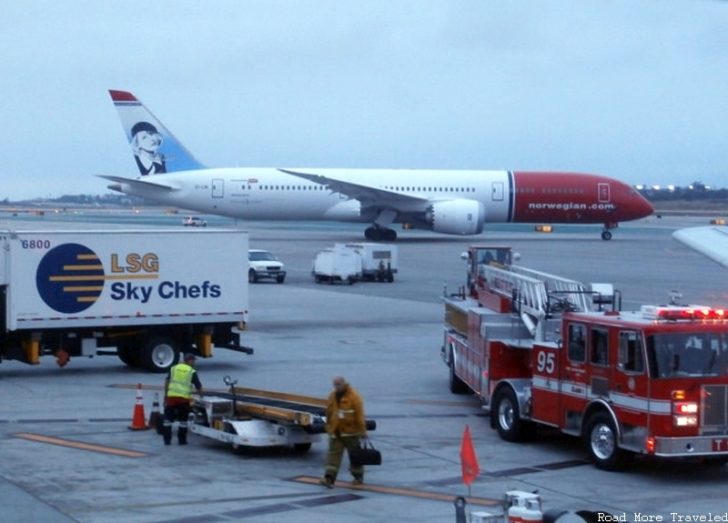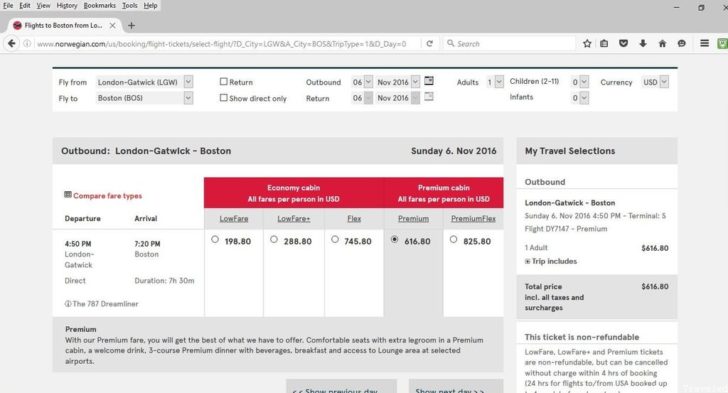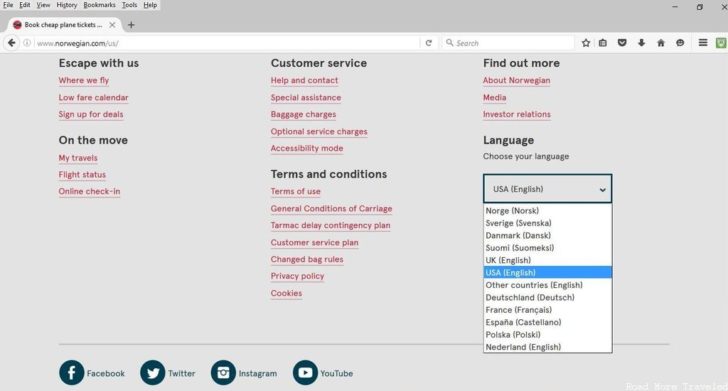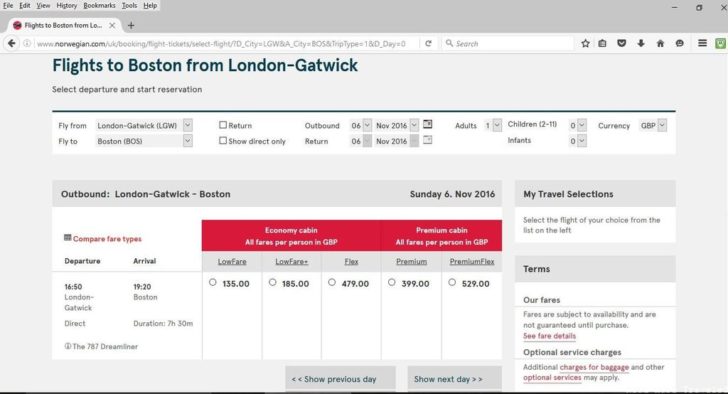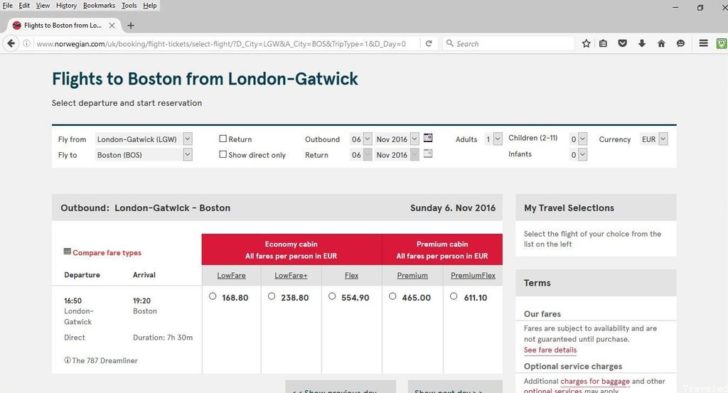Norwegian Air (technically Norwegian Air Shuttle) is an European low-cost carrier. The airline has expanded into the United States over the last few years, using low fares as its primary selling point. And when I say low fares, I mean absurdly low in many cases. It’s not unusual to see sub-$400 roundtrip economy fares from the East Coast to London Gatwick in the off-season. Even “Premium Cabin” fares (sort of a cross between Premium Economy and Business Class) often price at less than $1,500 all-in. That’s crazy cheap, and makes Norwegian a good choice not just for travelers on a budget. Travelers needing “positioning” flights for award travel or discounted premium class fares can also benefit. When booking flights on Norwegian, though, it pays to choose your site carefully, as I explain below.
Different Country-Specific Sites, Different Prices
A couple of months ago, I decided that a short trip to Europe in November would be an excellent opportunity to check out Norwegian’s Premium Class (more on the trip in a future post), and started looking for feasible routings home. Some research on ITA Matrix indicated the cheapest routing was London-Gatwick to Boston, with an indicated Premium Class fare of £399. I then proceeded to Norwegian’s website, which indicated a fare of $616.80.
That’s a great fare, but there was one problem. The GBP-USD exchange rate when I booked this ticket in late July was roughly £1 = $1.32. The US dollar translation equated to approximately £467. That’s either an awful exchange rate, or Norwegian just charges American customers higher fares, I thought, but guess I should just be happy about flying home in Business Class for $616. Right?
Well, I then remembered that every time I browsed to the norwegian.com website, it asked me to choose my preferred language If you do not fully understand the language in which the fare is described, do not rush in to booking it, we used this translation agency with great success avoiding any surprise. And then I noticed this drop-down menu at the bottom of the screen:
Just for kicks, I decided to switch to UK English to see what would happen. Bingo! The £399 fare shown on Matrix now appeared.
At the aforementioned exchange rate, the fare translated to roughly $527. Now the bad news is, Norwegian, as is common for European carriers, charges a credit card transaction fee for tickets purchased through the European site, 2% in this case. But even with the transaction fee added in, the total all-in price would be ~$537. That’s a whopping $80 less than on the U.S. site.
But wait, there’s more! The UK site also allows you to choose the euro as your preferred currency. This returned a fare of 465 euros before the transaction fee.
The transaction fee brought the total to €474.10. The exchange rate at the time was roughly €1 = $1.10, which translated to roughly $521. For a total savings of nearly $95 off the USD price, this was a no-brainer, and so I paid in euros. (The card I used doesn’t charge foreign transaction fees. But even if it did charge the usual 3%, the total would still be cheaper by nearly $80). Curiously enough, if you translate the lowest coach fare to dollars, you end up with a lower fare by paying in pounds instead of euros ($178 if denominated in pounds, $186 in euros). This represents only a modest difference compared to purchasing on the U.S. site.
So What’s the Lesson Here?
I can’t say I’ve come across as strange a currency conversion situation as this one. Normally, purchasing on a foreign site yields roughly the same fare as the U.S. site when translated to dollars. That is, unless it’s a mistake fare on one side or the other. Airlines usually update FX rates in near real-time, so unless you’re a really quick draw, it’s unusual to be able to meaningfully arbitrage exchange rate differences. But when I checked fares a couple of days ago, I’m seeing pretty much the exact same scenario playing out. In other words, significant pricing differences when purchasing in Sterling or euros.
If I had to guess, I’d suspect Norwegian is just lazy with updating their exchange rates. It’s also possible they intentionally mark up fares priced in dollars. Either way, if you’re thinking of booking on Norwegian, it pays to check the fare in foreign currency, and do the math on the currency conversion, before booking. You could save yourself a substantial sum of money.
Photo at top: Norwegian Air 787 at Los Angeles International Airport.

